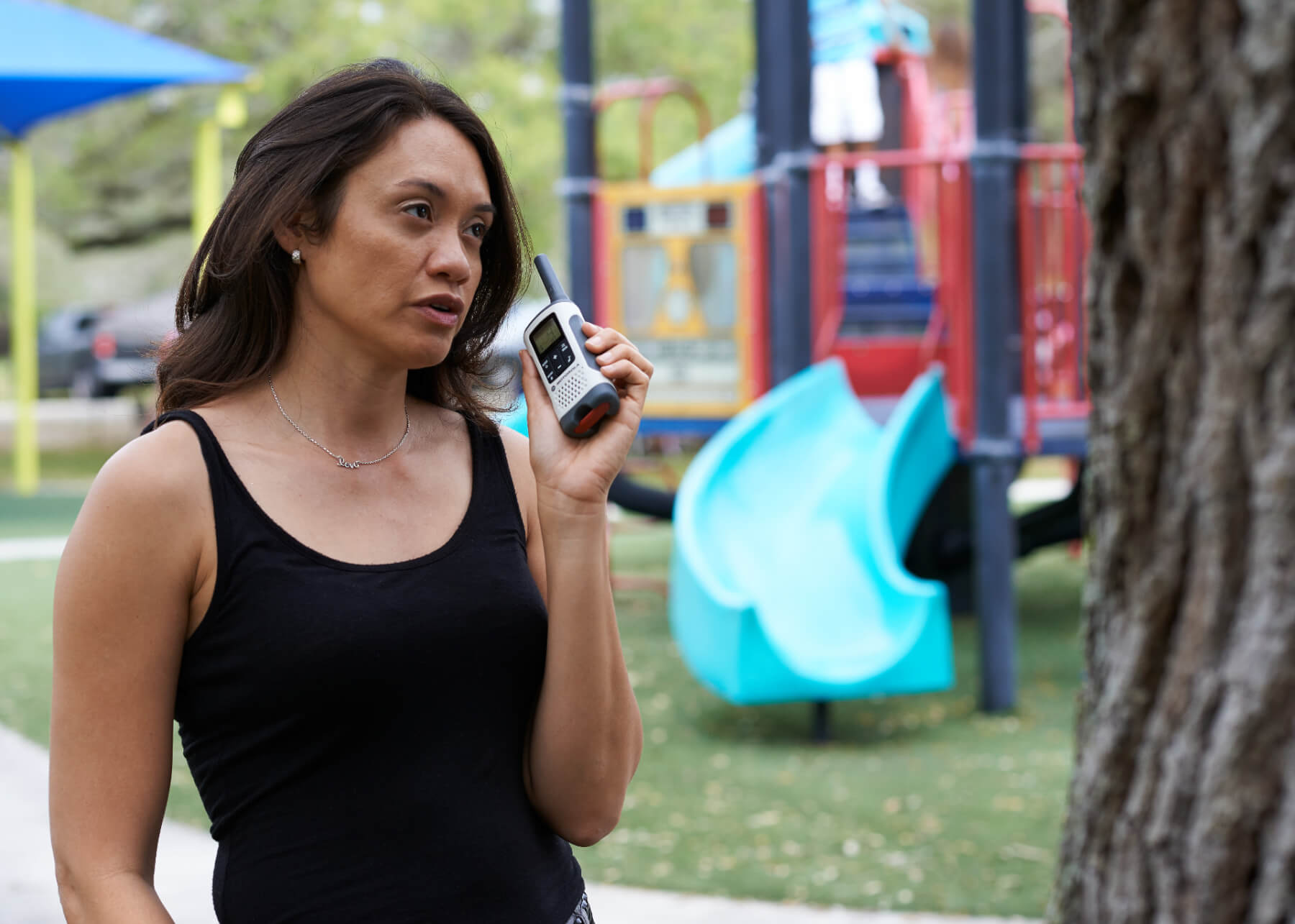Share
The range of walkie-talkies is determined by the transmission power of the walkie-talkie in combination with the type of antenna. The transmitting power of a walkie-talkie is usually expressed in the number of watts or the number of milliwatts. The frequency at which the walkie-talkie will transmit usually also determines the maximum transmission power that may be used. The most commonly used frequencies for walkie-talkies are the PMR446 frequencies. This is the frequency band of 446 MHz. About 20 frequencies are available on this frequency band on which you can transmit with 500 milliwatts (0.5 watts). These frequencies are used throughout Europe for mutual licence-free communication.
Undertone
Because walkie-talkies are popular, it is extremely busy on these frequencies. You will always experience shared use. The manufacturers have created an undertone for this. We will spare the technical explanation, but the walkie-talkie transmits a number. If this number is correct in the other radios, the microphone will open. This technique is called CTCSS or PL. If you buy a standard license-free walkie-talkie from Motorola or Kenwood, this undertone is the same. They can therefore communicate directly with each other. The undertone between different brands is usually different, so these two-way radios do not work directly with each other. We can program this for you. For example, if you are going to use walkie-talkies in a busy shopping street, it is possible for us to adjust the undertone. We choose an almost unique number so that you do not experience shared use (in fact there is).
Own frequency
Do you want to use more transmission power and not be bothered by shared use? It is then possible to apply for a license from the Telecom Agency. This permit is issued in almost all cases. You expect to get your own frequency, but in the busy ether you will always share this frequency with another user. The Telecom Agency checks whether there are no other users in the area (at the time of issue). You may use more transmission power on this emitted frequency. Usually this is about 2 watts. This also concerns the transmission power that ultimately comes from the antenna. This will have to be measured.
Range and rules of thumb
We have a few rules of thumb for converting transmit power to range. Below are the rules of thumb that Firecom uses.
-
- 0.5 watt transmit power has a range of 500 meters in open field or 5 floors
-
- 1.0 watt transmit power has a range of 1000 meters in open field or 10 floors
-
- 1.5 watt transmit power has a range of 1500 meters in open field or 12 floors
-
- 2.5 watt transmit power has a range of 2500 meters in open field or 15 floors
You can see in the table above that the number of floors remains. We have gained this experience in practice. In addition, it is important to report that this should always be tested. We have professional measuring equipment for this and can provide this for you. Contact us for a professional coverage measurement.
Wrong information on packaging
We think it is important to inform you that the range suggested on the packaging of a walkie-talkie is almost never realistic. Manufacturers state on the box of a walkie-talkie with 0.5 watts of transmitting power that the range is about 10 kilometers. That is not correct and only feasible if all conditions are correct and there are no obstacles between the users. Keep this in mind when purchasing your walkie-talkies. Do you want professional advice? Call us on 085-4011980.
